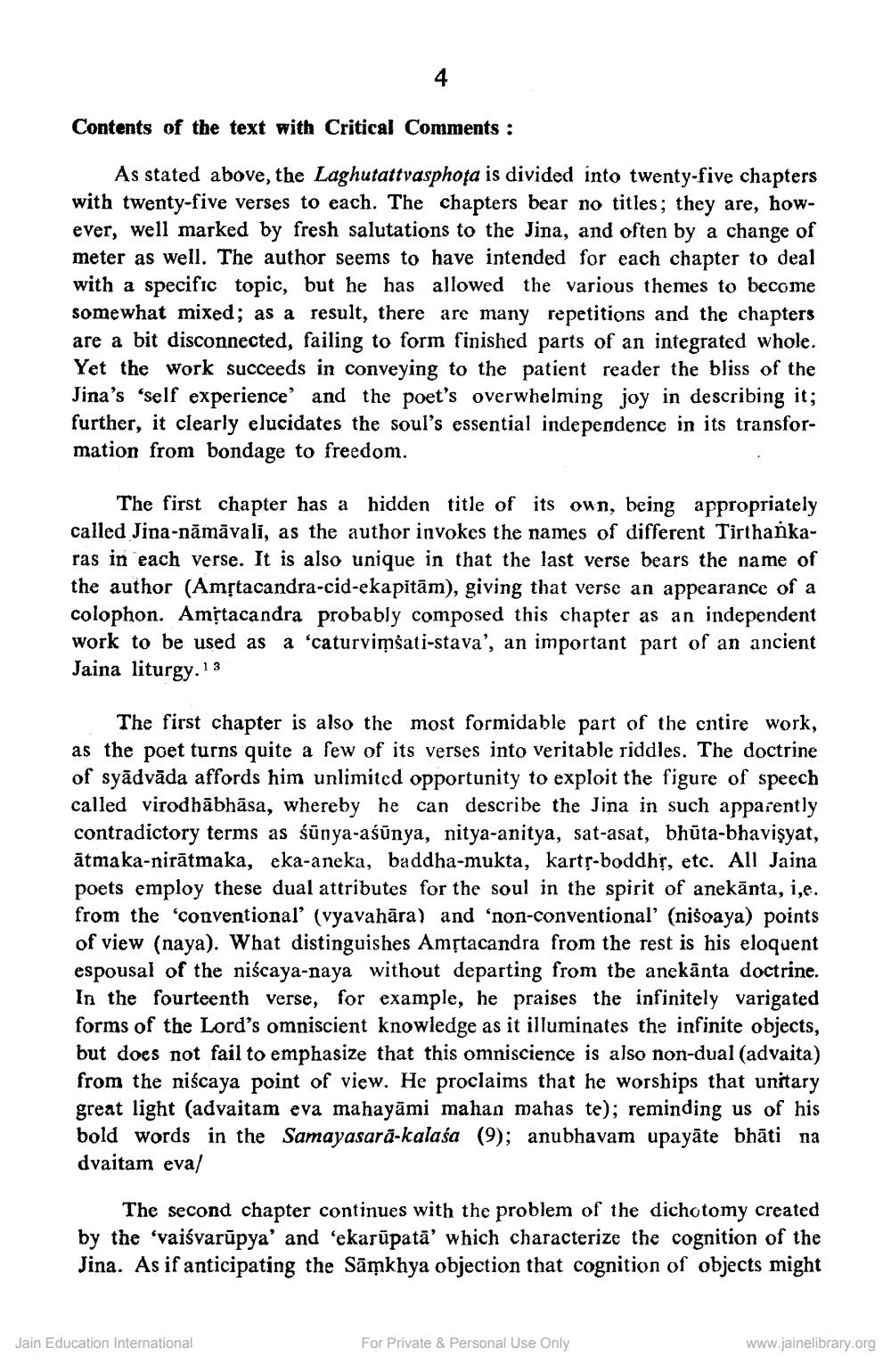________________
4
Contents of the text with Critical Comments:
As stated above, the Laghutattvasphota is divided into twenty-five chapters with twenty-five verses to each. The chapters bear no titles; they are, however, well marked by fresh salutations to the Jina, and often by a change of meter as well. The author seems to have intended for each chapter to deal with a specific topic, but he has allowed the various themes to become somewhat mixed; as a result, there are many repetitions and the chapters are a bit disconnected, failing to form finished parts of an integrated whole. Yet the work succeeds in conveying to the patient reader the bliss of the Jina's 'self experience' and the poet's overwhelming joy in describing it; further, it clearly elucidates the soul's essential independence in its transformation from bondage to freedom.
The first chapter has a hidden title of its own, being appropriately called Jina-nāmāvali, as the author invokes the names of different Tirthankaras in each verse. It is also unique in that the last verse bears the name of the author (Amṛtacandra-cid-ekapitām), giving that verse an appearance of a colophon. Amṛtacandra probably composed this chapter as an independent work to be used as a 'caturvimsati-stava', an important part of an ancient Jaina liturgy. 13
The first chapter is also the most formidable part of the entire work, as the poet turns quite a few of its verses into veritable riddles. The doctrine of syādvāda affords him unlimited opportunity to exploit the figure of speech called virodhābhasa, whereby he can describe the Jina in such apparently contradictory terms as śūnya-aśūnya, nitya-anitya, sat-asat, bhūta-bhavisyat, ätmaka-nirātmaka, eka-aneka, baddha-mukta, kartṛ-boddhṛ, etc. All Jaina poets employ these dual attributes for the soul in the spirit of anekānta, i,e. from the 'conventional' (vyavahāra) and 'non-conventional' (niŝoaya) points of view (naya). What distinguishes Amṛtacandra from the rest is his eloquent espousal of the niścaya-naya without departing from the anekanta doctrine. In the fourteenth verse, for example, he praises the infinitely varigated forms of the Lord's omniscient knowledge as it illuminates the infinite objects, but does not fail to emphasize that this omniscience is also non-dual (advaita) from the niscaya point of view. He proclaims that he worships that unitary great light (advaitam eva mahayāmi mahan mahas te); reminding us of his bold words in the Samayasara-kalasa (9); anubhavam upayāte bhāti na dvaitam eva/
The second chapter continues with the problem of the dichotomy created by the 'vaiśvarūpya' and 'ekarūpata' which characterize the cognition of the Jina. As if anticipating the Samkhya objection that cognition of objects might
Jain Education International
For Private & Personal Use Only
www.jainelibrary.org




